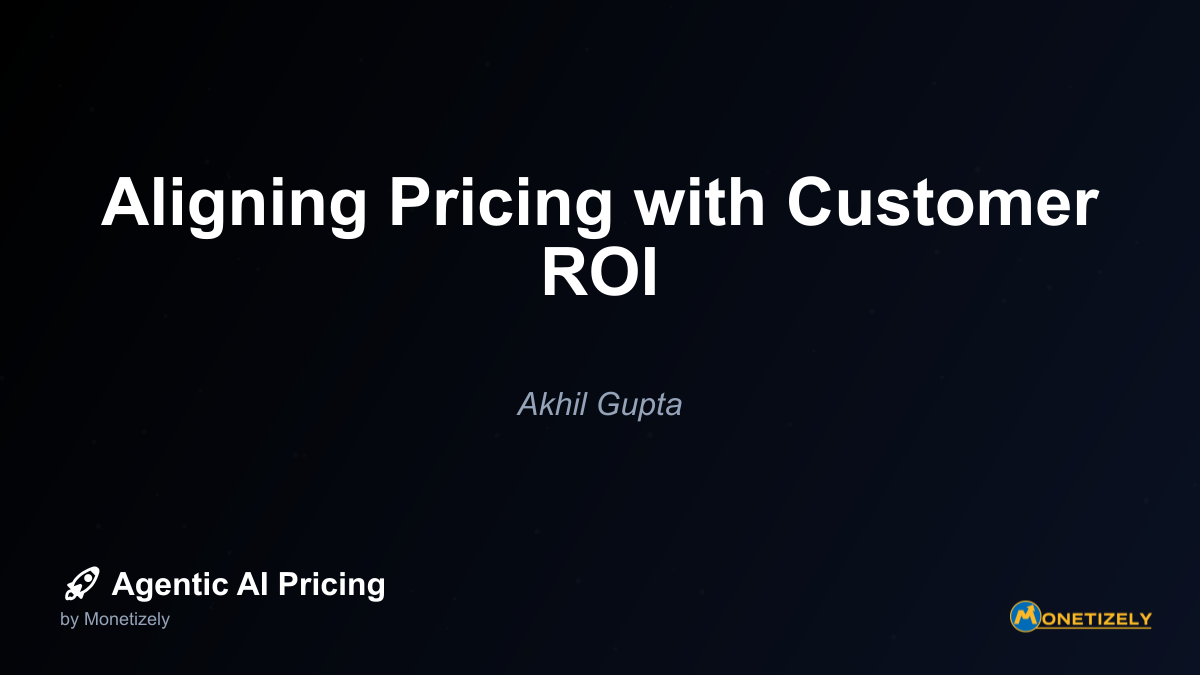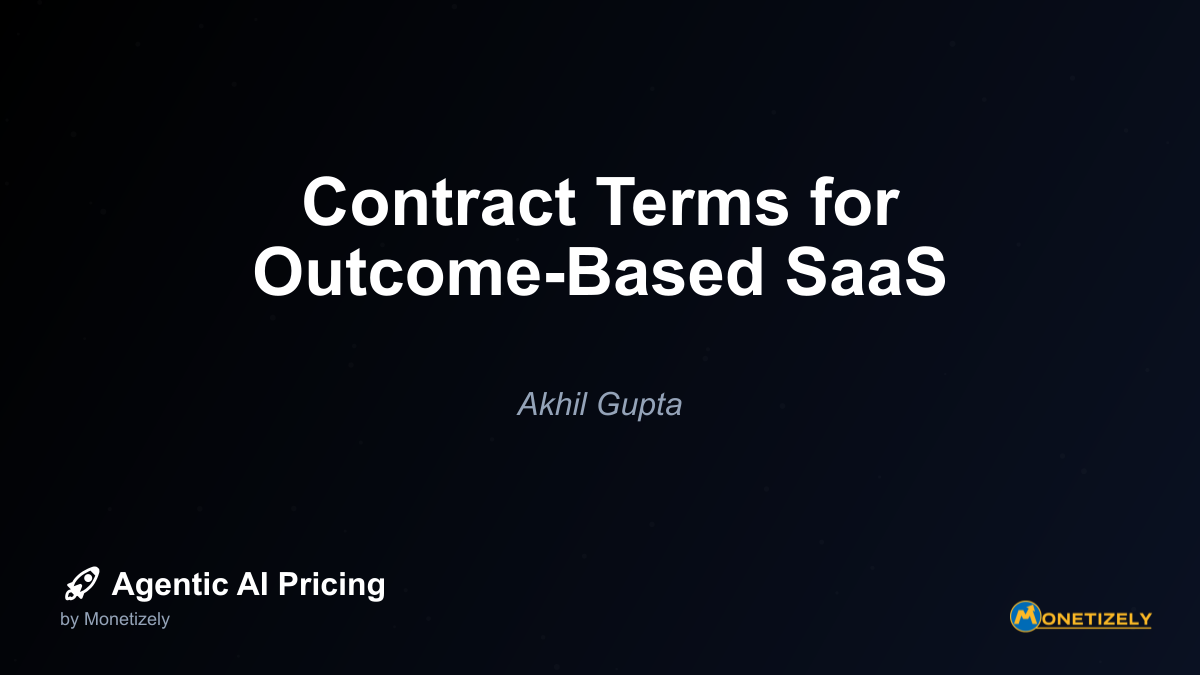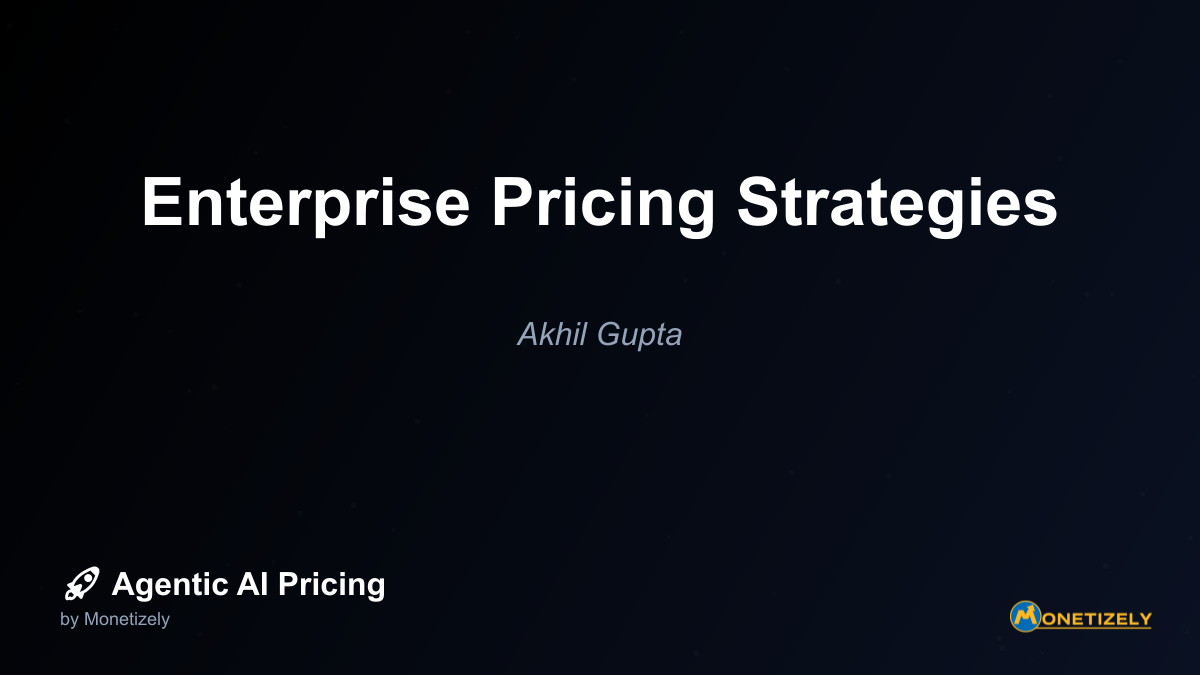· Ajit Ghuman · Pricing Agentic SaaS Products · 7 min read
Grandfathering Legacy Customers
AI and SaaS Pricing Masterclass
Learn the art of strategic pricing directly from industry experts. Our comprehensive course provides frameworks and methodologies for optimizing your pricing strategy in the evolving AI landscape. Earn a professional certification that can be imported directly to your LinkedIn profile.

Implementing grandfathering policies requires careful attention to legal considerations. While grandfathering is generally viewed favorably from a customer relations perspective, it must be structured to avoid legal complications.
Contract Review and Amendment
Before implementing grandfathering, companies should:
- Review existing contracts for price change provisions
- Determine if formal amendments are required
- Assess whether existing terms allow for differentiated pricing
- Consider whether “most favored nation” clauses exist in enterprise contracts
For agentic AI companies, where contracts may include complex usage rights and data processing terms, this review becomes even more critical.
Documenting Grandfathering Terms
Clear documentation protects both the company and customers:
- Explicitly define grandfathering duration and conditions
- Specify circumstances that might terminate grandfathering status
- Clarify how grandfathering applies during contract renewals
- Document any restrictions on account changes or expansions
Regulatory Compliance
Agentic AI companies must navigate additional regulatory considerations:
- Ensure grandfathering policies don’t create discriminatory pricing practices
- Consider data protection implications if grandfathered tiers have different data handling processes
- Verify compliance with industry-specific regulations that might affect pricing practices
- Address potential international regulatory differences for global customers
For a deeper dive into legal considerations around pricing changes, you can explore our detailed guide on managing legacy pricing gracefully in the SaaS world.
Financial Planning for Grandfathered Customers
Grandfathering creates unique financial planning challenges that require careful modeling and monitoring:
Revenue Impact Modeling
Effective grandfathering requires sophisticated financial modeling:
- Calculate the revenue differential between grandfathered and current pricing
- Project the natural attrition rate of grandfathered customers
- Model different scenarios for grandfathering duration and transition approaches
- Quantify the lifetime value benefit of reduced churn against revenue opportunity costs
Cost-to-Serve Analysis
Not all grandfathering costs appear in pricing differentials:
- Assess whether legacy customers consume different resources than new customers
- Calculate the overhead of maintaining multiple pricing tiers
- Quantify any technical debt created by supporting legacy features
- Evaluate support costs associated with grandfathered customers
Financial Reporting Considerations
Grandfathering can affect key SaaS metrics:
- Segment reporting to show grandfathered versus non-grandfathered cohorts
- Adjust ARR/MRR growth projections to account for grandfathering effects
- Consider how grandfathering impacts net revenue retention calculations
- Prepare investor communications explaining grandfathering rationale and impact
Operational Execution of Grandfathering Policies
Successful grandfathering requires cross-functional coordination:
Sales Team Alignment
Sales teams need clear guidelines to navigate grandfathering conversations:
- Establish policies for handling grandfathered customers who want to change plans
- Create rules for account expansions within grandfathered organizations
- Develop talking points for explaining pricing differences to prospects
- Set compensation policies that don’t penalize sales teams for grandfathering
Customer Success Management
Customer success teams play a crucial role in grandfathering implementation:
- Train CSMs on value articulation for both grandfathered and new customers
- Develop proactive communication plans for grandfathering milestones
- Create escalation paths for grandfathering exceptions
- Implement health monitoring specifically for grandfathered accounts approaching transitions
Product and Engineering Coordination
Technical teams must support the grandfathering infrastructure:
- Ensure billing systems can handle multiple pricing tiers
- Design product experiences that gracefully handle feature differences
- Create mechanisms to identify grandfathered accounts in internal tooling
- Plan for eventual technical simplification as grandfathering phases out
Grandfathering in the Context of Agentic AI Evolution
Agentic AI products present unique grandfathering challenges due to their rapid capability evolution. Several considerations are particularly relevant:
Value-Based Pricing Transitions
As agentic AI products evolve from novelty to necessity, pricing models often shift from activity-based to value-based frameworks. Grandfathering during this transition requires:
- Mapping legacy usage metrics to new value metrics
- Creating equivalency frameworks that maintain fairness
- Developing migration incentives that highlight value advantages
- Providing transition tools that help customers understand new pricing paradigms
Compute Cost Fluctuations
Unlike traditional SaaS, agentic AI products face significant underlying infrastructure cost variations:
- Design grandfathering policies that account for compute cost trends
- Consider usage caps or fair use policies for grandfathered tiers
- Implement monitoring for outlier usage patterns
- Create transparent communications about resource consumption
Feature Velocity Management
The rapid pace of agentic AI capability development complicates grandfathering:
- Determine which new capabilities should be included in grandfathered plans
- Create clear policies for feature access across different customer cohorts
- Develop migration incentives tied to high-value new capabilities
- Balance innovation pace with grandfathering commitments
Case Studies: Grandfathering Done Right (and Wrong)
Success Story: Intelligent Document Processing Platform
An agentic AI document processing company faced a challenging transition from per-document pricing to a value-based model tied to automation outcomes. Their successful approach included:
- Comprehensive analysis of usage patterns across customer segments
- Perpetual grandfathering for early adopters who had provided development feedback
- Time-limited grandfathering with graduated transitions for other existing customers
- Clear communication of the value proposition behind the new model
- Migration incentives that offered expanded capabilities at partial price increases
Results: 92% retention of grandfathered customers, 40% voluntary migration to new pricing within 18 months, and significantly improved unit economics for new customers.
Cautionary Tale: Agentic Sales Intelligence Tool
A sales intelligence platform with agentic capabilities implemented a poorly executed transition from user-based to deal-value pricing:
- Announced changes with minimal notice (30 days)
- Offered no grandfathering options for existing customers
- Created complex migration requirements
- Failed to articulate value advantages of the new model
- Implemented technical changes that disrupted existing workflows
Results: 35% customer churn within 90 days, significant social media backlash, and sales pipeline disruption lasting two quarters.
Communication Strategies for Grandfathering Announcements
How grandfathering is communicated significantly impacts its reception:
Framing the Narrative
Effective communication focuses on:
- Emphasizing customer loyalty recognition rather than pricing changes
- Connecting pricing evolution to enhanced value delivery
- Providing context about market and technology evolution
- Maintaining transparency while highlighting benefits
Communication Channels and Timing
Strategic communication planning includes:
- Tiered notification approach starting with high-value customers
- Multi-channel communication including email, in-app, and direct outreach
- Advance notice proportional to the magnitude of eventual change
- Scheduled follow-ups to address questions and concerns
Addressing Common Customer Questions
Prepare for these frequent inquiries:
- “Why are prices changing for new customers?”
- “How long will my grandfathered pricing last?”
- “What happens if I need to change my subscription?”
- “Will I get access to new features at my current price?”
- “What happens when my contract renews?”
When Not to Grandfather
While grandfathering offers many advantages, it isn’t always the optimal approach:
Unsustainable Economics
When current pricing is fundamentally unviable, grandfathering may prolong financial distress. Consider alternatives when:
- Unit economics are deeply negative at current pricing
- Infrastructure costs have increased dramatically
- The company faces existential financial challenges
- The product has pivoted to a fundamentally different value proposition
Strategic Repositioning
Major strategic shifts may necessitate clean breaks:
- Fundamental business model transformations
- Significant market repositioning
- Complete product rebuilds or architecture changes
- Acquisitions or mergers requiring unified pricing
Administrative Complexity
In some cases, the overhead of grandfathering exceeds its benefits:
- When billing systems cannot support multiple pricing tiers
- If customer segmentation creates regulatory compliance issues
- When support costs for legacy systems are prohibitive
- If grandfathering creates unsustainable technical debt
Future-Proofing: Building Grandfathering into Initial Pricing
The most elegant grandfathering strategies are planned before they’re needed:
Contract Design
Forward-thinking contracts include:
- Clearly defined price change parameters and notice periods
- Explicit provisions for feature additions and removals
- Transparent terms for contract renewal pricing
- Defined pathways for customer growth and expansion
Technical Architecture
Systems designed with change in mind feature:
- Flexible billing systems supporting cohort-based pricing
- Feature flagging capabilities for granular access control
- Usage analytics that support value-based transitions
- Customer segmentation capabilities in core systems
Customer Expectation Setting
Setting appropriate expectations from day one includes:
- Transparent communication about pricing evolution philosophy
- Clear documentation of price protection policies
- Education about value metrics and their potential evolution
- Consistent messaging about the relationship between innovation and pricing
Conclusion: Balancing Business Evolution and Customer Trust
Grandfathering represents the delicate balance between business evolution and customer relationship preservation. In the rapidly advancing agentic AI space, this balance becomes even more critical as products evolve from experimental to essential.
Effective grandfathering strategies recognize that pricing is not merely a revenue mechanism but a reflection of company values. By implementing thoughtful transitions that respect existing customers while enabling sustainable growth, agentic AI companies can maintain trust through periods of significant change.
The most successful grandfathering approaches share common elements: transparent communication, fair terms, operational excellence, and a genuine commitment to customer success. When these elements align, companies can evolve their pricing to reflect new realities while preserving the relationships that fueled their initial growth.
As the agentic AI landscape continues to mature, companies that master the art of pricing transitions will enjoy significant advantages: stronger customer loyalty, more predictable revenue streams, and the flexibility to adapt pricing as technology and markets evolve. In this dynamic environment, grandfathering isn’t merely a pricing tactic—it’s a strategic capability that supports long-term business health.
For a deeper exploration of related topics, consider our comprehensive analysis of grandfathering versus forced migration approaches that examines the strategic considerations for different transition models.
Co-Founder & CEO
Ajit is the author of Price To Scale, a top book on SaaS Pricing and is the Founder of Monetizely. Ajit has led and worked in pricing and product marketing at firms like Twilio, Narvar and Medallia. His work has been featured in Forbes and VentureBeat. Ajit regularly consults with software companies from Seed stage to post-IPO on pricing strategy. Ajit is also a highly-rated co-instructor for 'The Art of SaaS Pricing and Monetization' on Maven.
Pricing Strategy Audit
Let our experts analyze your current pricing strategy and identify opportunities for improvement. Our data-driven assessment will help you unlock untapped revenue potential and optimize your AI pricing approach.




